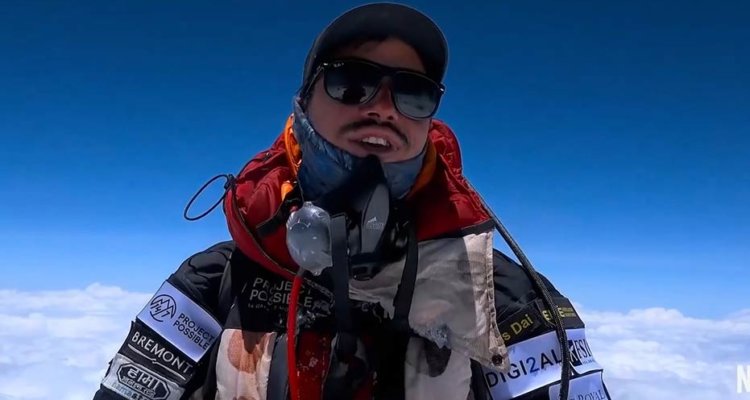Back in 2019, Nepalese mountaineer Nirmal “Nims” Purja got it in his head that he should summit every eight-thousander, the 14 mountains on Earth that stand taller than 8,000 meters above sea level. Summit them he did, and before 2019 ended, even, which is a greater accomplishment still than summiting them over the course of years. So great is Purja’s triumph that Netflix inevitably picked up a documentary about his effort, “14 Peaks: Nothing Is Impossible,” directed by Torquil Jones with workmanlike awe at the sheer Herculean feat of doing in months what just 43 others have accomplished in considerably more time.
The Best Documentaries Of The Decade [2010s]
The film should read like an epic. Instead, it reads like a boilerplate sports doc; the kind kept on constant rotation in ski resort taverns where they might catch diners’ attention for a minute or two while they wait on chili and beers. If you are one of those diners, “14 Peaks” is a suitable distraction. If you are a sporting or mountaineering enthusiast – and the addition of Patrick Imbert’s magnificent “The Summit of the Gods” to Netflix’s catalog is enough to capture the hearts of anybody who isn’t – your mileage may vary. “14 Peaks” is at odds with itself. In stretches, it’s a basic recounting of Purja’s quest to break records and ascend the eight-thousanders: Everest, K2, Kangchenjunga, Lhotse, Makalu, Cho Oyu, Dhaulagiri I, Manaslu, Nanga Parbat, Annapurna I, Gasherbrum I, Broad Peak, Gasherbrum II, and Shishapangma. In other stretches, it’s about Purja, and how his upbringing and life experiences make him uniquely qualified among his peers to achieve his unrealistic goals.
Frankly, Purja is far more interesting than Project Possible, his 3-phase summiting plan. Not everybody can do what Purja did; otherwise, they would. The staggering difficulty of his unprecedented achievement is impressive. But being impressive and being worth the span of an entire feature documentary are two different things, and in fact, that difficulty level makes Purja a more interesting subject. Apart from steel will, unflagging positivity, raw determination, and skill that appears equally as learned as innate, what’s the secret sauce that let Purja succeed where countless others have failed, and not only succeed but succeed beyond preconceived expectation?
When Jones cuts away from the action on the mountains to sample bits of backstory, “14 Peaks” is unsurprisingly gripping. Purja’s time serving the British Armed Forces as part of the Brigade of Gurkhas – Nepalese soldiers who sound an awful lot like Spartans for sheer badassery – is centered as a significant part of his development as a man, mainly in the sense that to be a Gurkha is to make iron look like straw. These guys are tough. In “14 Peaks’” present, that toughness is an asset for not braving the elements; his humanity is essential to surviving them and to help others survive. More than once, the film stops in the middle of a climb to recall Purja’s refusal to leave stranded mountaineers behind in brutal conditions. Only once does such a story end in tragedy, with the death of a fellow climber.
“14 Peaks” spends only a few minutes on this aside, but with every testimony to Purja’s exemplary character, delivered by fellow climbers ranging from Jimmy Chin, who also produced the film, to his friend Garrett Madison, those minutes make an increasingly dramatic impact on the meaning of the film. We’re left with a sense that, perhaps, Purja would instead have swapped places with this unnamed stranger; it’s not that Purja wants to die as much as he is as concerned with preserving his integrity as he is with beating all the odds. There’s a story in that complex dichotomy: The biological imperative versus an ethical impulse to lend aid even in dire circumstances. “14 Peaks” could have focused on and found a movie in that aspect alone, or shaped itself around mountaineering culture and where Nepalese mountaineers fit into it, or told of Project Possible through the eyes of Purja’s wife, Suchi, appearing in talking-head segments as a source of support as well as anxious. Purja put himself through hell to complete the challenge, but imagine being that person’s spouse, relegated to the bench and unable to provide substantial assistance in worst-case scenarios.
The movie is about everything related to Project Possible, and as a consequence of the broad scope, it’s about nothing. Jones wades only as far as the shallows, and in fairness, what he has chosen as “14 Peaks’” through lines – the project and the adventure – is all that most audiences are likely to care about anyway. Purja has the eight-thousanders in his sight. He has us in his view, too; it is his oft-stated hope that viewers watching him make it all the way to the top of the world not one but fourteen times will be inspired by his example to reach greater heights of their own. That’s a wonderful message to offer. Whether “14 Peaks” is the vehicle for applying it, though, is a question mark as large as an eight-thousander. [C-]

